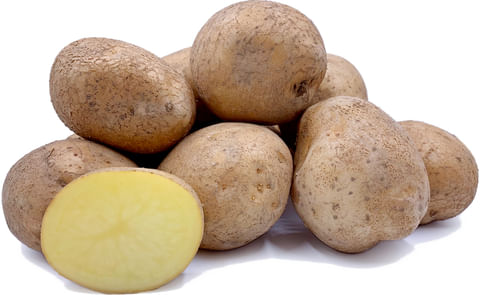Potato cultivation in Indonesia spans over 65 municipalities, primarily in Sumatra, Java, Sulawesi, and Nusa Tenggara, with minor scattered areas in Maluku and Irian Jaya. The crop is grown in highland areas between 800 and 1,800 meters above sea level, occasionally reaching up to 2,000 meters where deep volcanic soils are present. Key production centers include Pengalengan, Lembang, and Cipanas in Java and Brastagi in Sumatra.
Potatoes are mainly cultivated by small-scale farmers in both irrigated and non-irrigated highland fields using traditional methods, often as a monocrop or in relay and rotation systems such as rice-potato-cabbage or potato-maize-fallow. Planting and harvesting practices vary by region but generally involve manual labor, with crops maturing in 110–120 days. Two main growing seasons exist—rainy (September–December) and dry (April–July)—though year-round production is possible due to the tropical climate.
Over the decades, potato varieties have evolved from older European types to more recent ones like Granola, Cosima, and Cipanas. Seed tubers, often imported from Germany and the Netherlands, represent the most expensive input, with certified and imported seed mainly used by larger growers and traders, while some farmers reuse seed for many years.
According to FAO data, Indonesia produced approximately 1.25 million tons of potatoes in 2023, making it the largest potato producer in Southeast Asia. Per capita potato consumption remains relatively low at around 4.69 kg per year as of 2021, varying widely by region, socioeconomic status, and proximity to production areas.
Marketing follows the typical chain from growers to rural and urban wholesalers, retailers, and consumers, with Jakarta being a major consumption center. Most national production is consumed domestically, with only small quantities exported.
Potato cultivation in Indonesia dates back to the late 18th century when the Dutch East India Company introduced the crop to West Java around 1794–1795. Within a few decades, the potato, referred to locally as kentang holanda or "Dutch tuber," had spread to other islands such as Sumatra, where Batak farmers in the highlands of the Karo Plateau became renowned for their potato-growing expertise.
Historical records, including the Encyclopaedie van Nederlandsch-Indie (1917), and observations by Crawford in 1820, highlight the early success and adaptability of potatoes in Java. Crawford noted that the Javanese variety, praised for its taste and size, was superior to those found in India and Europe. Potatoes thrived without fertilizer, could be grown year-round, and required no special storage, making them an ideal crop in upland regions.
The British occupation in the early 19th century further boosted demand, encouraging wider adoption of potatoes in the Javanese diet, particularly in cooler highland areas. However, due to Indonesia's predominantly warm climate, potatoes did not become a staple food nationwide, unlike more climate-resilient crops like yams and sweet potatoes.
Agricultural Statistics for indonesia
Loading...
Consumption Statistics Indonesia
| Sweet Potatoes , Consumption (Crop Equivalent) in 2018: | 6.65 | kg/capita/year | ℹ | Sweet Potatoes |
| Potatoes (Fresh and Processed) , Consumption (Crop Equivalent) in 2017: | 4.41 | kg/capita/year | ℹ | Potatoes (Fresh and Processed) |
| Sweet Potatoes , Consumption (Crop Equivalent) in 2017: | 6.33 | kg/capita/year | ℹ | Sweet Potatoes |
| Potatoes (Fresh and Processed) , Consumption (Crop Equivalent) in 2016: | 4.35 | kg/capita/year | ℹ | Potatoes (Fresh and Processed) |
| Sweet Potatoes , Consumption (Crop Equivalent) in 2016: | 7.26 | kg/capita/year | ℹ | Sweet Potatoes |
| Potatoes (Fresh and Processed) , Consumption (Crop Equivalent) in 2015: | 4.26 | kg/capita/year | ℹ | Potatoes (Fresh and Processed) |
| Sweet Potatoes , Consumption (Crop Equivalent) in 2015: | 7.51 | kg/capita/year | ℹ | Sweet Potatoes |



